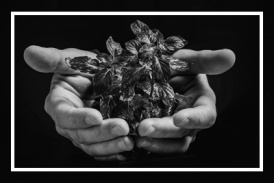Understanding the Marketing Funnel: Localized Strategy for Regional Business Growth
Local businesses, particularly those operating in tight-knit communities, face a different set of dynamics than national brands. The marketing funnel, when tailored to regional patterns and cultural context, becomes a far more effective tool.
“Most funnels don’t break because of a bad product or weak message,” said Brett Thomas, founder of Jambalaya Marketing in New Orleans. “They break because they weren’t built for the audience they’re trying to serve. Around here, relationships drive results. If a funnel doesn’t account for that, it leaks.”
Jambalaya Marketing, a Louisiana-based agency focused on full-service advertising—including web, billboard, broadcast, and digital solutions—approaches funnel building with local insight at the core. According to Thomas, understanding the psychology of local buyers is critical to making each stage of the funnel meaningful.
Top of Funnel (TOFU): Awareness in the Bayou
The top of the funnel is about generating awareness—getting in front of people who don’t yet know a brand or its offerings. In South Louisiana, brand exposure often begins through community involvement, regional radio, local social media engagement, and good old-fashioned visibility.
Billboards on I-10, sponsorships at crawfish boils, or Facebook videos shot in local dialects have a different kind of resonance. The message isn’t just reaching people—it’s speaking their language.
Top-of-funnel marketing here isn’t about slick production or national trends. It’s about recognition. Familiar accents, neighborhood landmarks, and cultural references grab attention more effectively than generic ads ever could.
Middle of Funnel (MOFU): Building Trust with Context
Once awareness is established, the next step is nurturing interest and engagement. This stage often includes lead magnets, social media interaction, email follow-up, retargeting ads, and web content.
In a market like South Louisiana, credibility is earned not just through digital presence but through relational consistency. Online reviews, word-of-mouth recommendations, and responsiveness are critical at this level. If someone sees an ad on the way to church, hears a friend mention the brand at dinner, and then sees the same business answering comments on Facebook, it builds relational trust.
This stage also involves educating the audience—explaining services, sharing case studies, and addressing common concerns. A marketing funnel adapted to the local market does this with authenticity. Cookie-cutter blogs or national ad scripts often fall flat when dealing with an audience that values storytelling, character, and connection.
Bottom of Funnel (BOFU): Action, Conversion, and Follow-Through
At the bottom of the funnel, potential customers are ready to make a decision. The job of the funnel at this point is to eliminate hesitation. Locally, this might mean showcasing real testimonials from known community members, offering a free consultation with someone on staff who’s recognizable, or making the call-to-action feel less transactional and more personal.
Website design, appointment setting tools, pricing transparency, and localized landing pages all matter. But more than that, people want to know they’re not being hustled. They want to work with businesses that show up when they say they will, answer the phone, and remember their name.
In South Louisiana, the final sale is often made after the digital process has done its job. The funnel narrows to a phone call, a handshake, or a casual walk-in visit. If that experience aligns with the tone and promise of the earlier messaging, the conversion is complete.
Post-Funnel: The Local Feedback Loop
The marketing funnel doesn’t end when the sale closes. In a region where reputation spreads fast, the post-sale experience is just as important as the pre-sale engagement.
The feedback loop includes follow-up emails, requests for Google or Facebook reviews, and invitations to refer friends or family. A satisfied customer in Baton Rouge or Slidell can become the next top-of-funnel trigger simply by talking about their experience.
A localized funnel strategy must account for this. Encouraging review generation, community-based referral incentives, and regular follow-up help turn customers into advocates—one of the most powerful top-of-funnel tools in a region driven by word of mouth.
Conclusion
The marketing funnel remains a foundational concept in advertising, but its strength lies in its adaptability. In New Orleans and across South Louisiana, the funnel must reflect the region’s culture, behavior, and sense of identity. Awareness can begin with a parade float sponsorship. Consideration can be nurtured through a neighbor’s endorsement. Conversion might take place in a driveway conversation, long after the Facebook ad was clicked.
Understanding this rhythm is not about trend-following. It’s about respecting how real people make real decisions in real communities.
Morgan Thomas
Rhino Digital, LLC
+1 504-875-5036
email us here
Visit us on social media:
Facebook
Legal Disclaimer:
EIN Presswire provides this news content "as is" without warranty of any kind. We do not accept any responsibility or liability for the accuracy, content, images, videos, licenses, completeness, legality, or reliability of the information contained in this article. If you have any complaints or copyright issues related to this article, kindly contact the author above.
Outsource Accounts Payable Services Help Real Estate Firms Streamline Financial Operations
Growing at 31.20% CAGR | IoT Security Market Reach USD 73.92 Billion by 2026 Globally
Hammocks Market to Reach USD 768 Million by 2035 | Key Players: Eagles Nest Outfitters, Grand Trunk, Hatteras Hammocks
Więcej ważnych informacji
 Jedynka Newserii
Jedynka Newserii

 Jedynka Newserii
Jedynka Newserii

Konsument

Tylko 35 proc. Celów Zrównoważonego Rozwoju ONZ możliwe do osiągnięcia przed 2030 r. Potrzebna ściślejsza współpraca międzynarodowa
Jak wynika z raportu ONZ, choć w ciągu ostatniej dekady dzięki dążeniu do realizacji przyjętych celów udało się poprawić życie milionów ludzi na całym świecie, to jednak tempo zmian pozostaje zbyt wolne, by dało się je osiągnąć do 2030 roku. Postęp hamują przede wszystkim eskalacja konfliktów, zmiana klimatu, rosnące nierówności i niewystarczające finansowanie. Jak wynika ze sprawozdania Parlamentu Europejskiego, problemem jest także brak ścisłej współpracy międzynarodowej i sceptyczne podejście niektórych państw ONZ.
Przemysł spożywczy
UNICEF: Wszystkie dzieci poniżej piątego roku życia w Gazie cierpią z powodu niedożywienia. Sytuacja jest katastrofalna

Ataki Izraela na Strefę Gazy i jej izolacja doprowadziły do całkowitego załamania podstawowych usług i ograniczenia możliwości dostaw i dystrybucji pomocy humanitarnej – wskazuje UNICEF. W efekcie setki tysięcy Palestyńczyków są w sytuacji ciągłego zagrożenia życia i cierpią z powodu niedożywienia i głodu. Ta klęska dotyczy praktycznie wszystkich dzieci poniżej piątego roku życia. Konflikty są jednym z głównych przyczyn braku bezpieczeństwa żywnościowego, głodu i niedożywienia na świecie. Szczególnie dotyczy to Afryki i Azji Zachodniej.
Prawo
Branża ciepłownictwa czeka na unijną i krajową strategię transformacji. Liczy na większe fundusze i korzystne regulacje

Komisja Europejska zapowiedziała rozpoczęcie w I kwartale 2026 roku prac nad strategią dla ciepłownictwa i chłodnictwa. Nad tym strategicznym dokumentem w zakresie ciepłownictwa pracuje także polski rząd. Branża podkreśla, że obie te strategie będą miały kluczowe znaczenie dla trwającej transformacji w ciepłownictwie, czyli przyszłości ogromnych inwestycji, które czekają sektor do 2050 roku. Jednocześnie apeluje o większe wsparcie tego procesu ze środków publicznych.
Partner serwisu
Szkolenia

Akademia Newserii
Akademia Newserii to projekt, w ramach którego najlepsi polscy dziennikarze biznesowi, giełdowi oraz lifestylowi, a także szkoleniowcy z wieloletnim doświadczeniem dzielą się swoją wiedzą nt. pracy z mediami.



![Nestlé w Polsce podsumowuje wpływ na krajową gospodarkę. Firma wygenerowała 0,6 proc. polskiego PKB [DEPESZA]](https://www.newseria.pl/files/1097841585/fabryka-nesquik_1,w_85,r_png,_small.png)






.gif)

 |
| |
| |
|